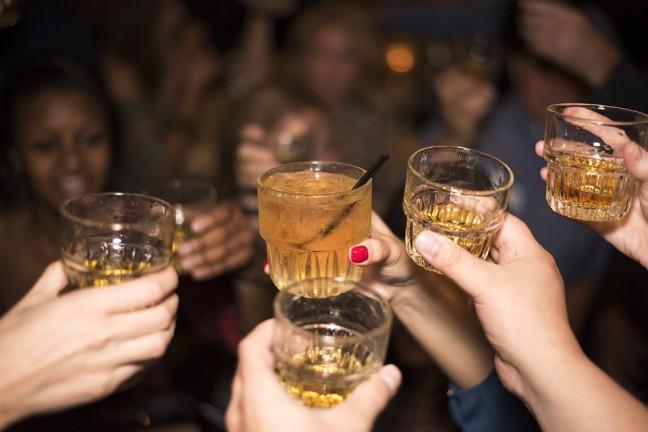It’s no secret that University of Wisconsin students love a good beer.
But that love can become dangerous, given that on average, UW has more high-risk drinkers than other public universities in the nation, according to a 2013 campus AlcoholEdu survey.
With April being Alcohol Awareness Month, there may be no better time to start conversations about drinking on campus.
Among the 83 percent of incoming students who finished the AlcoholEdu survey, 78 percent reported drinking prior to their arrival at UW. Twenty-eight percent are considered high risk drinkers, meaning five drinks for men, or four drinks for women, in a single sitting.
Assistant Director of Student Conduct Will Chapman, who has worked with AlcoholEdu since 2013, said about 40 percent of students engage in high-risk drinking within their first six weeks on campus.
“That’s pretty concerning statistics, and a fairly steady trend for our new students over the last three years,” Chapman said.
Students usually drink in social settings, Chapman said, and some situations are more likely to include alcohol than others. According to the survey report, 43 percent of students drink at off-campus residences.
But on-campus residences aren’t exempt. Thirty-one percent of students drink at on-campus locations.
Colton Wickland, undergraduate assistant in alcohol and drug prevention at University Health Services, said some residential halls, like Sellery and Witte have a reputation of being more engaged in drinking and partying. The social pressure of living there may compel students who are usually not heavy drinkers to over-indulge, he said.
“Certain dorms have a culture, an expectation when students come in, like ‘I’m in this dorm so I need to behave this way,’ which is kind of unfortunate,” Wickland said.
When students fail to make responsible decisions about consuming alcohol, Wickland said they can end up paying a big price. About 100 to 300 UW students go to detox each year, he said.
Wickland’s job at UHS is to research and analyze student drinking behaviors qualitatively, such as what kind of alcohol they were drinking and what they were doing when they were sent to detox.
Students are required to sleep off the alcohol and remain there until their blood alcohol concentration reaches zero, and then meet with a counselor before they can leave detox, Wickland said. Detox costs nearly $600.
Additionally, if the student is underage, a drinking ticket will cost about $250. The student would also meet with a counselor and may be refereed to take a $125 class called BASICS, where the student talks one-on-one with professional counselors on substance abuse. Total costs of excessive drinking can easily add up.
Upon receiving UHS’s qualitative analysis reports, university administrators like Chapman realize that students who go to detox tend to have something in common.
“The most common drink is liquor, often in the form of shots and bottle pulls, so in forms where students aren’t able to track or count how many drinks they’re having, and pace themselves accordingly,” Chapman said. “So they end up in a place where they’re incapacitated by the alcohol and are not able to make rational decisions.”
For these students, UW has a number of programs to help educate them, Chapman said, such as BASICS, an online intervention course to prevent heavy drinking, and Badger Step Up!, a program to educate student organization leaders to set up role models.
Most university efforts, however, are restricted to reactive intervention. To reduce drinking rates on campus, Chapman said students need to actively take responsibility in their drinking and plan ahead.
He suggested students should know their own limits, and plan how many drinks they will have at parties accordingly. Data show the riskiest drinking occurs when people deviate from their established drinking habits, Chapman said.
“We want students to understand that a little bit of alcohol can actually go a long way, and you don’t need as much as you probably think to have a good time,” Chapman said. “And the reality is, choosing not to drink is a viable choice in our community.”
Bystander education is also important, Chapman said. When someone sees a friend who cannot take care of him or herself under the influence, the bystander should report the situation to UW Police Department.
Moving forward, Chapman said UW wants to see high-risk drinking rates become lower than other UW System schools and the 18 percent national average. The school is continuously working with UWPD and the city of Madison to raise people’s awareness of alcohol.
“It’s a team effort, we need everybody on campus to help out with this, set the stage, to say these are the things that are unacceptable in our community,” Chapman said. “This is how we want to see our peers and our colleagues to use alcohol responsibly, to really see that change happen.”
Correction: A previous version of this article stated Sellery and Witte have seen an increase in alcohol violations this year that led to a new house fellow policy. This is incorrect. This article also previously misstated the cost of detox, it has since been corrected. The Badger Herald regrets these errors.


